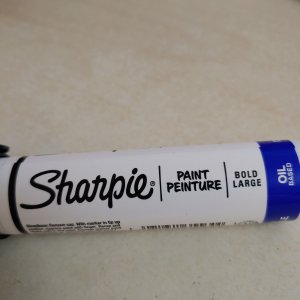TenEleven
Well-known
Be careful with alcohol as for cemented elements it can get in between the lens cement and can cause trouble. Naptha (lighter fluid) is a bit gentler and has less capillary action, but you still have to be careful. Often these paints are water soluble for that reason. Have you tried a wet tissue and simply wiping it off?
For the other non-water-soluble paints I use a dentists tool and slowly chip away at it. Messy and time consuming, but sadly I don't know another way that would not endanger the lens. To repaint the lens I use water soluble calligraphy ink which dries as a very dark very textured (read: matte) black.
The tool in the middle. It has no sharp edges so you don't risk scratching the lens as much.
The sides of the lens are matted and rough textured anyways so that paint will stick better.

Repainted rear group of a war-time Biogon. The element on the top, not the one I am holding. Not the best picture I apologize, but you can see that there is none of the usual bubbling and the lens looks uniformly black from the inside. There is a faint bright rim which I could not fully eliminate in this case, but it is vastly improved from its prior state.

For the other non-water-soluble paints I use a dentists tool and slowly chip away at it. Messy and time consuming, but sadly I don't know another way that would not endanger the lens. To repaint the lens I use water soluble calligraphy ink which dries as a very dark very textured (read: matte) black.
The tool in the middle. It has no sharp edges so you don't risk scratching the lens as much.
The sides of the lens are matted and rough textured anyways so that paint will stick better.

Repainted rear group of a war-time Biogon. The element on the top, not the one I am holding. Not the best picture I apologize, but you can see that there is none of the usual bubbling and the lens looks uniformly black from the inside. There is a faint bright rim which I could not fully eliminate in this case, but it is vastly improved from its prior state.






